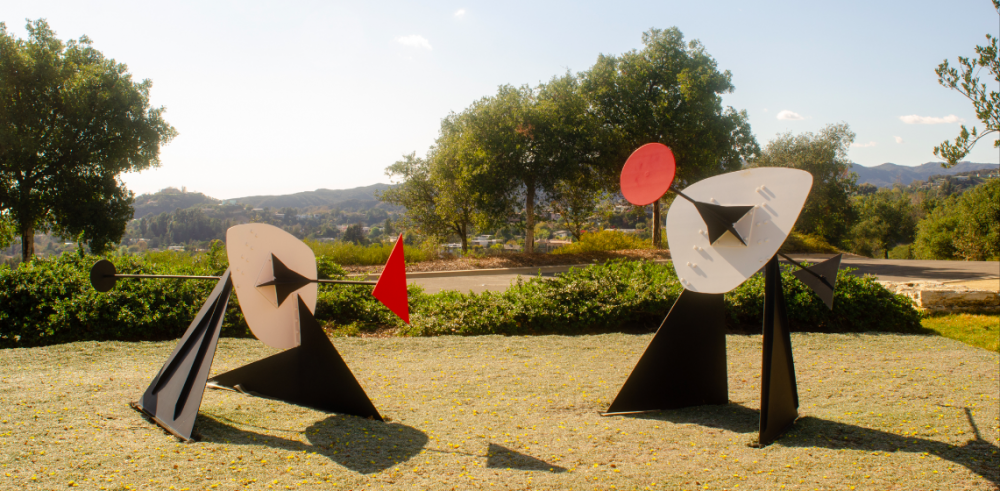
In February 2018, I flew out of Sydney towards Los Angeles. I was heading for the Hollywood Hills to attend a week-long workshop on the Surface Treatment Strategies for Outdoor Painted Sculpture at the Getty Conservation Institute (GCI). This article is a chance for me to share with you details of the workshop and reflect on what I learnt and why I still carry those lessons with me today.
The Getty
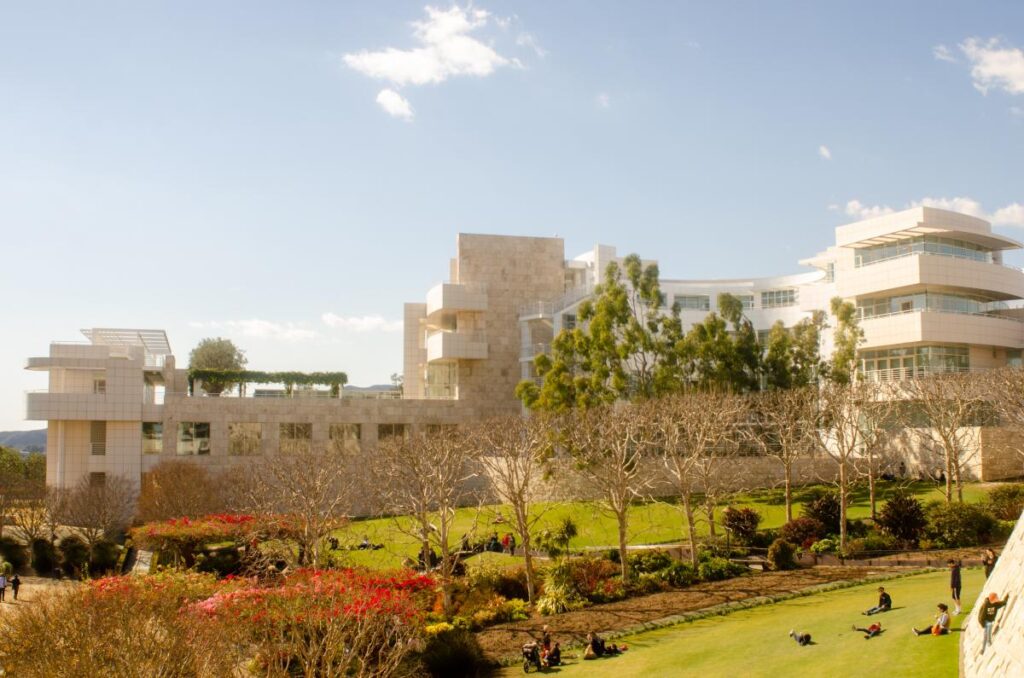
The Getty Centre gallery and garden. Image: Nick Flood.
The GCI has an ongoing program designed to address and promote the conservation of outdoor painted sculpture. I can’t say exactly when the Getty shifted its attention to this area, but they have been publishing resources on this topic since 2010. In 2012, they invited 31 experts to participate in a meeting at the Metropolitan Museum of Art. Productive discussions around ethical, technical, legal, management and communication issues were recorded in the meeting’s report (available from the GCI as a free PDF). In response to concerns raised at the meeting the Surface Treatment Strategies for Outdoor Painted Sculpture workshop was proposed.
IIC 2016 Los Angeles Congress
My first encounter with the team from the GCI and their efforts in outdoor painted sculpture was at the IIC 2016 Los Angeles Congress. This conference was themed Saving the Now and aimed to highlight conservation of modern and contemporary art. Presentations generally had a philosophical bent; however, there was one major exception. The paper entitled ‘Coat of arms: Dovetailing the needs of outdoor sculpture and military assets to develop more durable and adaptable paint systems’ had a scientific rigor and practical clarity that made it stand out in the program. It was authored by a collaborative team from inside and outside the Getty including John Escarsega (US Army Research Laboratory), Abigail Mack (Mack Art Conservation), Rachel Rivenc (GCI) and Tom Learner (GCI). They outlined the problems associated with the limited life of the matte paint used on Alexander Calder’s sculptures of the 1960s and ’70s and set out a methodology for documenting existing painted surfaces. Then, with the resources of the US Army behind them, they developed a modern paint system with the desired colour and gloss level and a significantly longer life. I was awestruck by what they were able to achieve and when I saw the CGI advertise this workshop, I jumped at the chance.
The Workshop
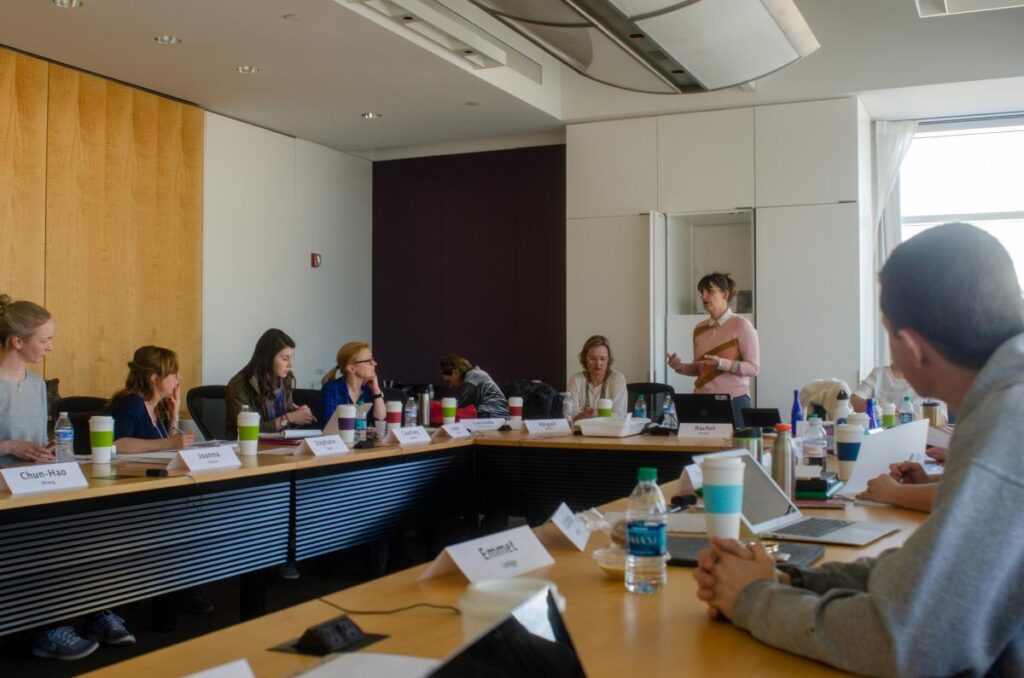
Discussion led by Rachel Rivenc. Image: Nick Flood.
The Surface Treatment Strategies for Outdoor Painted Sculpture workshop aimed to provide training and space for discussion for experienced conservators from around the world. The workshop schedule included ethical and technical lectures, tours, practical sessions and treatment case studies.
Ethical
Early on, the instructors made clear their ethical approach to the treatment of outdoor painted sculpture. Their position can be summarised in this way:
- All outdoor painted sculpture will require repainting at some point.
- The preservation of the original appearance of the sculpture in line with the artist’s intent takes priority over the originality of the coating.
- Stripping and recoating is an acceptable and ethical treatment approach.
There is power in having such a clearly articulated guiding principle, but it is perhaps not as simple as it sounds. As a consequence of adopting these assumptions, thorough investigation of the original appearance of the artwork is required. This investigation usually involves scientific analysis of the painted surface of the artwork (and contemporaneous artworks) and close consultation with the artist (or artist’s foundation). However, even if the original colour, texture and artistic intent are understood, in practice it is often difficult to reproduce the desired paint finish. Repainting an outdoor sculpture in its entirety is preferred over localised treatment of damage. This makes touch-ups only suitable as a short-term treatment option.
Technical
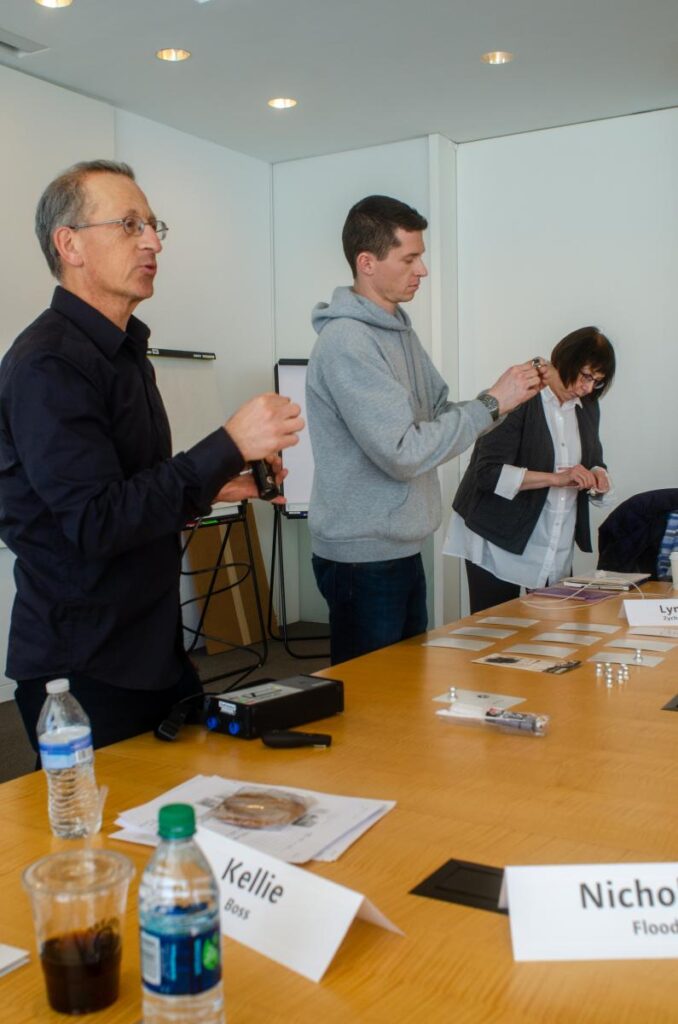
John Escarsega demonstrates a pull test. Image: Nick Flood.
Lectures and discussion on technical aspects included the specification, application and maintenance of various types of paint systems. We learnt about paint selection, surface preparation, application methods, measuring film thickness and pull tests. Particular attention was paid to what is involved in matching paint colour and surface texture (gloss level).
Tours
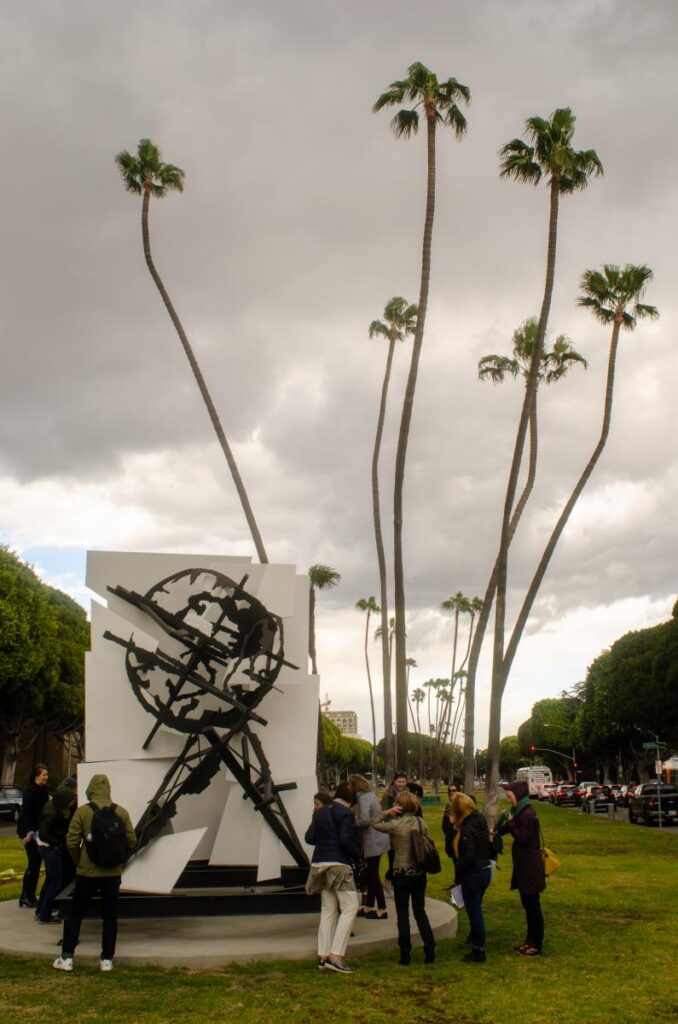
William Kentridge’s World on its Hind Legs in Beverley Hills. Image: Nick Flood.

Rosa Lowinger and Alexander Liberman’s Sisyphus in Beverley Hills. Image: Nick Flood.
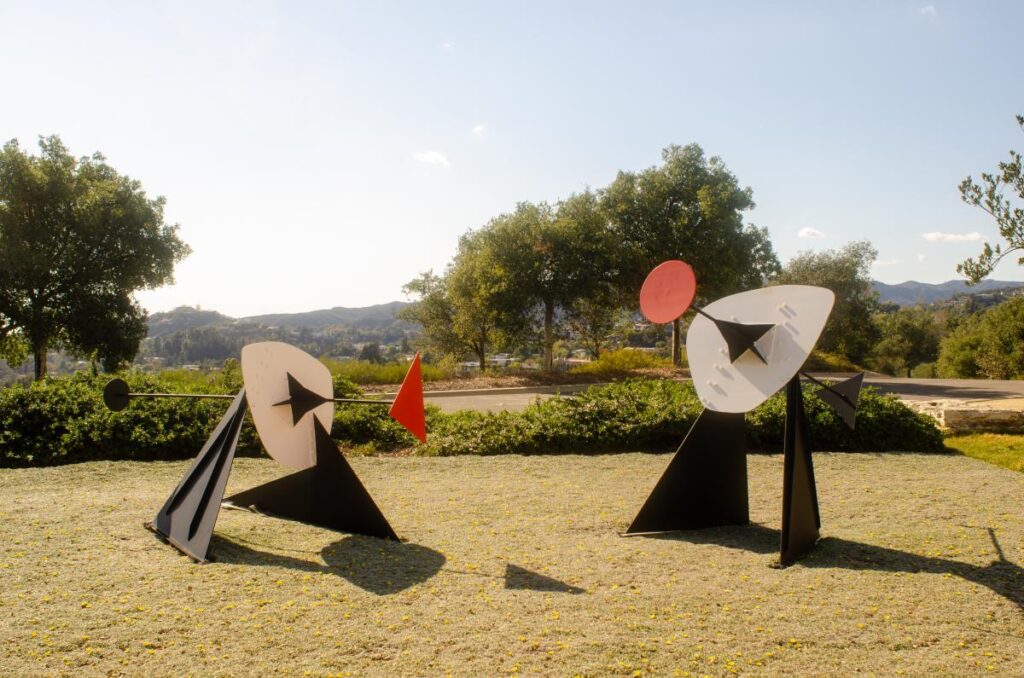
Alexander Calder’s The Jousters. Image: Nick Flood.
Over the week, we were sent out on three tours. On the afternoon of the first day, we visited the City of Beverley Hills outdoor collection. We assessed the condition and display methods of five sculptures and discussed possible solutions to the problems we encountered. On the second day, we spent the morning in the Getty Centre garden inspecting their painted sculptures. We paid particular attention to Alexander Calder’s The Jousters, as it had been recently recoated using the paint produced by the GCI and the US Army. It was interesting to learn that this treatment had not been without its own problems. On day four, we visited a paint applicator’s workshop that specialised in painting contemporary artworks.
Practical Sessions
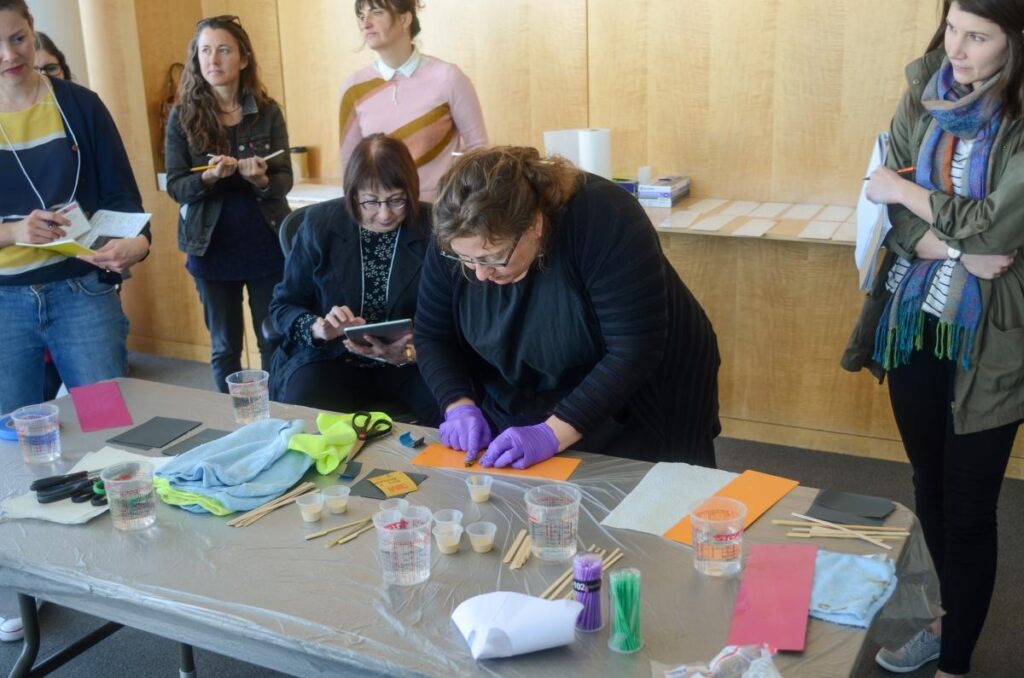
Lucinda Linderman demonstrates how to mitigate and correct paint application defects. Image: Nick Flood.

Nikki van Basten instructs us on local repairs during a practical session. Image: Nick Flood.
There were two practical sessions, both on different methods used to correct imperfections in or damage to painted finishes. The first gave us the opportunity to try various techniques to deal with paint defects commonly found in freshly painted surfaces. We were able to remove imperfections using a range of abrasive and polishing materials. During the second session we used practices adapted from the crash repair industry to rectify localised paint damage. As a short-term solution, small disfiguring areas of damage were infilled and paint was applied using an airbrush.
Case studies
Each workshop participant delivered a short presentation about a treatment of outdoor painted sculpture they had undertaken. With the encouragement of instructors, the presentations led to discussion around our successes, difficulties and failures in a remarkably open and honest manner. Because of this we all came away with a much deeper understanding of the issues at play. I won’t go into detail about my presentation, but the discussion it generated highlighted the difficulties that technical representatives from paint manufactures have in understanding the needs of the conservator.
What I took away with me
On reflection, it was the learning environment at the GCI that has left a lasting impression on me. The organisers of this workshop worked to create an atmosphere of trust and respect allowing participants to speak frankly with each other. In amongst the technical aspects of the workshop there was a clear lesson about what is most important: an inclusive environment that allows everyone to meaningfully contribute.
In the end
The Getty is a truly impressive institution with resources and talent to spare. I am privileged to have been able to participate in the ethical discussions, technical training, tours, practical session and case studies of the workshop. The message that sticks with me is the value of an open and supportive learning environment.